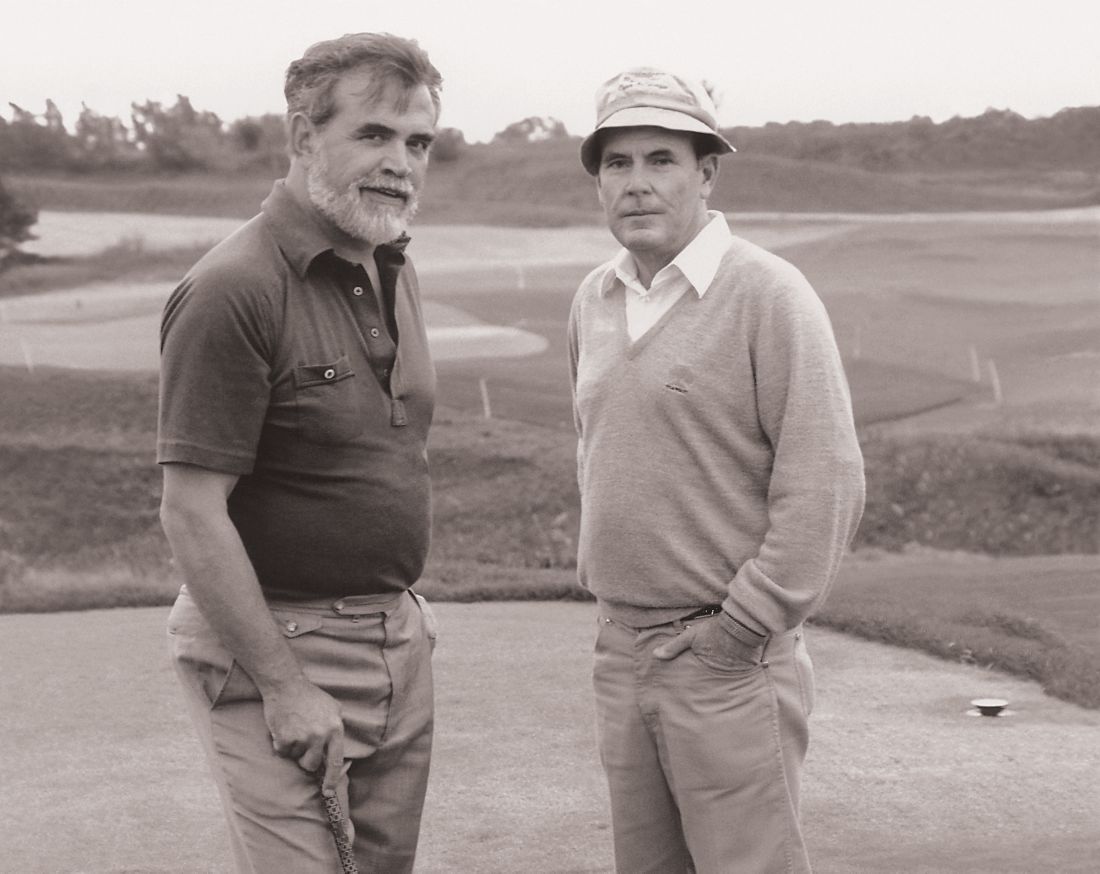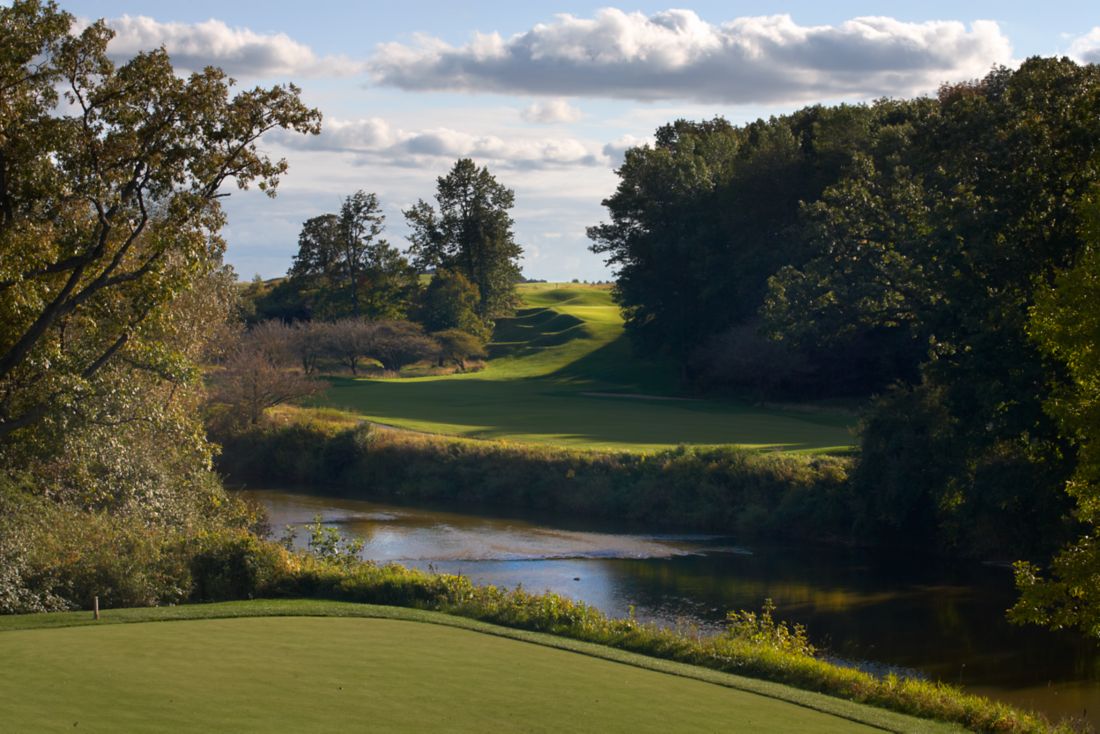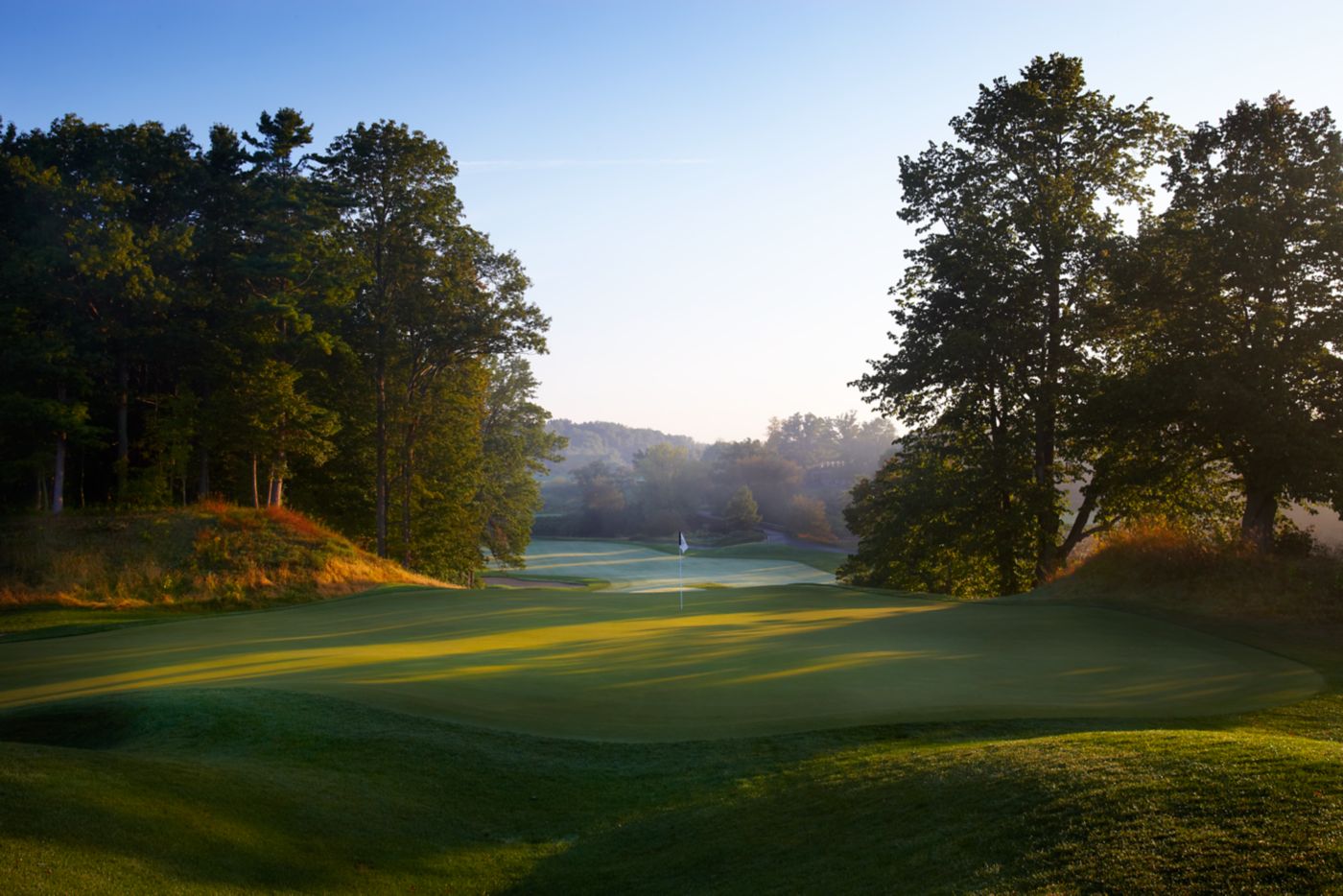
Previous picture of Blast from the Past
Next picture of Blast from the Past
Blast from the Past
Bucket-list rounds of golf are on tap all season long at Kohler, Wisconsin. But if you plan your early-season visit correctly, you might get the chance to experience the seldom-seen course that quite literally put the resort on the golfing map.
By Shaun Tolson
Bucket List Golf Experiences at Whistling Straits & Blackwolf Run
In northern climes such as Wisconsin, the emergence of spring is an exuberant time of year, especially for golfers. However, for avid links-goers in the know, springtime at Kohler, Wisconsin, is cause for even greater celebration. That’s because the final two weeks of April witness the return of an old, familiar friend, albeit for a limited time.
Each spring, the start of Kohler’s golf season offers players the chance to play Blackwolf Run’s original layout, which is comprised of an amalgamation of nine holes from the River course and the back nine of the Meadow Valleys course. This is the layout that was used when Blackwolf Run hosted the 1998 and 2012 Women’s US Opens, albeit with the two nines reversed. In keeping with that pedigree, when the original course is open for play during these two weeks, it follows that championship sequence of holes. The original routing does introduce one unique twist, however, but we’ll get to that in a moment.
During the late 1980s, when architect Pete Dye first visited the property, he immediately declared that he had never seen a piece of land that was more naturally suited for golf. At the time, Kohler’s first foray into the sport was not without risks. In fact, popular opinion posited that it was a fool’s errand for the resort to attempt to build a golf course of its own. “They thought that was ridiculous given the golf courses that we had in the area, both private and public,” the late Herb Kohler once said. “They saw no reason whatsoever for this company to build more golf.”
Yet, the business magnate understood what The American Club’s discerning clientele were clamoring for. Moreover, he surveyed the quality of those existing courses and then applied the Kohler family’s business mantra, which is to always provide a product or service that remains at the forefront of its respective industry. “If you’re going to live on the leading edge, you better understand where the leading edge is,” Kohler declared. “And then you need to design something better than that.”
That is precisely what Pete Dye did. When Golf Digest published its annual list of best new courses in 1988, Blackwolf Run was positioned firmly at the top. Since then, some golf and sports journalists have even claimed that the original layout represents the most important course built in Wisconsin—not only during the modern age, but perhaps ever.
If you’ve already been to Kohler to play the River and Meadow Valleys, you understand the appeal. “The land was carved by the last ice age, so while there’s only about 50 feet of total elevation change across the courses, those changes are often abrupt and very distinctive,” says Dirk Willis, Kohler’s vice president of golf, landscape, and retail.
Such characteristics presented an incredible natural canvas for golf course design—so much so that Dye and Kohler returned to the site only a year later, in 1989, to add 18 more holes. Those new holes, however, separated Blackwolf Run’s original routing, which is why golfers who get the chance to play that first course deem the experience so valuable. In fact, according to Willis, more than half of the golfers who visit the resort each year during this brief window of time are return guests. “Everyone loves the cohesiveness of the original layout,” he says. “But those who have been coming to Blackwolf since it opened love the nostalgia, too.”
The course isn’t revered only by visiting golfers, either. “The first nine that you play is phenomenal,” says Mike O’Reilly, the general manager of both Whistling Straits and Blackwolf Run. “It’s one of my favorite nines at the resort.”
That introductory stretch of holes actually begins with a unique one, a hole that’s only in play during these special two weeks. The opening hole on the back nine of Dye’s original routing is a medium-length par four that starts with a drive hit over the Sheboygan River to a generous landing area that gradually doglegs to the right then climbs uphill to a perched green. It’s the same putting surface that is normally played via a separate fairway, one that’s positioned up on the bluff and approaches the hole at a 90-degree angle from this original vantage point.
“It’s a beautiful hole,” O’Reilly says of this rarely used par four. “Depending on the tees that you’re playing, you’re standing either just above or right next to the Sheboygan River, which is a huge characteristic of Blackwolf Run as a whole.”
In the week leading up to the 2012 U.S. Women’s Open, some of the top players had strong opinions of this seldom-used par four. “It’s a thinker’s hole,” said the 2010 U.S. Women’s Open champion, Paula Creamer. “I’ll be going for the middle of the green every day.”
According to O’Reilly, even that strategy can backfire. “It’s a crown-shaped green,” he explains, “which means from the middle it can send balls in all different directions. From down below, it can be tough to know how good your approach shot actually is. You might hit what feels like a good shot, but when you get up there you might be a little disappointed. Or, you might hit one off line a little bit but when you walk up there you’ll be pleasantly surprised. Those things can and do happen.”
Cristie Kerr, the 2007 U.S. Women’s Open champion, recognized this unpredictability during practice rounds in 2012, which is why she confidently declared that “anybody in the field here would [be happy to] walk away with four pars on that hole.”
These days, the select golfers lucky enough to visit Kohler, Wisconsin while this striking, if not vexing, hole is in play are happy just to experience it. Then again, the same can be said for the entire sequencing of holes that makes up Blackwolf Run’s original layout.


